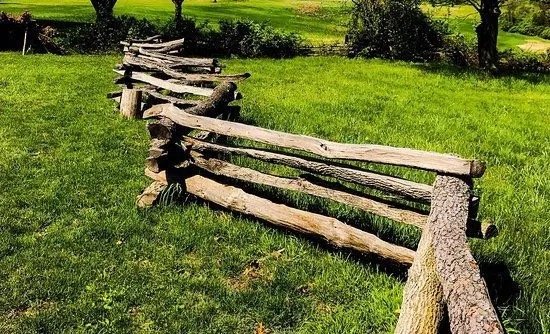A Journey Through Time: The History of Fences
Fences are an integral part of modern life, but have you ever wondered where they come from and how they’ve evolved? At Red Barn Fence Company, we’re passionate about the craft of fencing and its rich history. Let’s take a journey through time to explore how fences came to be the versatile structures we know today.
The Early Days: Necessity Meets Ingenuity
The concept of fencing dates back to ancient times when humans first began settling in one place. Early fences were built to protect crops and livestock, using natural materials like stones, wood, and even thorn bushes.
Stone Walls of Ancient Britain: Dry-stone walls, which require no mortar, were a common sight in prehistoric Britain and are still standing in some areas today.
Wattle Fences: Ancient communities wove branches together to create sturdy, rudimentary fences—a method still used in traditional construction.
Fences in the Ancient World
As civilizations grew, so did the complexity of their fencing.
Egypt: Hieroglyphics depict walled gardens and enclosed courtyards, showcasing the Egyptian appreciation for private, cultivated spaces.
Rome: The Romans introduced more sophisticated fencing techniques, including wooden palisades and walls made of bricks or stone.
The Middle Ages: Fences as Power and Property
During medieval times, fences became symbols of power and property ownership. Nobles built imposing stone walls to protect their castles, while peasants used hedgerows to delineate farmland.
Hedgerows: These living fences became a hallmark of the European countryside, providing both boundaries and shelter for wildlife.
The Feudal System: Fences were crucial in defining landholdings and controlling access during this era.
The New World: Fences in America
When settlers arrived in America, they brought fencing traditions with them, adapting to the vast, open landscapes.
Split-Rail Fences: Common in rural America, these fences were easy to construct with plentiful timber.
Barbed Wire Revolution: In the late 19th century, the invention of barbed wire transformed the American West, making it easier to control livestock over large areas.
The Modern Era: Fences for Every Need
Today, fences are as varied as the purposes they serve. From chain link fences for security to decorative vinyl panels, modern fencing reflects advancements in technology and changing aesthetics.
Industrial Revolution: New materials like steel and iron allowed for stronger and more intricate designs.
Eco-Friendly Trends: Sustainable materials like bamboo and recycled composites are gaining popularity as homeowners prioritize environmental impact.
Fences Today: Blending Function and Style
At Red Barn Fence Company, we honor the history of fencing while embracing modern innovation. Whether you’re looking for a rustic wooden fence reminiscent of the past or a sleek aluminum design for a contemporary look, we craft fences that stand the test of time.

